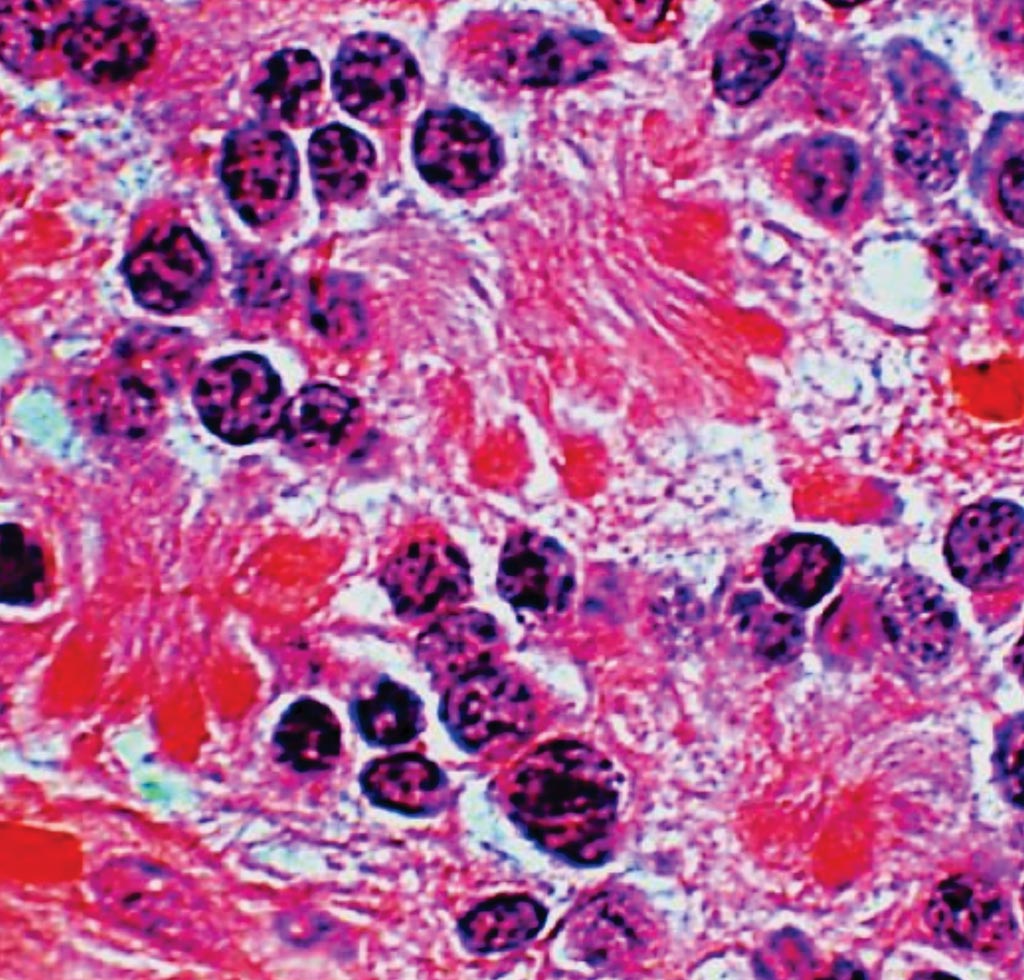Genetic Testing Recommended for Children at Risk for Retinoblastoma
By LabMedica International staff writers
Posted on 31 Oct 2017
Retinoblastoma is a cancer that starts in the retina at the very back of the eye. It can also spread to other parts of the body, including the brain and bones. There are approximately 350 new cases diagnosed each year in the USA.Posted on 31 Oct 2017
The disease primarily affects young children. It can be either hereditary or non-hereditary. Children with hereditary retinoblastoma often develop retinal tumors in both eyes within the first years of life. Early diagnosis, when tumors are small, improves the child's chance of survival and their chance of keeping their vision and their eyes.

Image: Histopathology of a retinoma showing abundant fleurettes and sparse cells with eosinophilic cytoplasm. Retinomas share the same genetic origin as retinoblastomas (Photo courtesy of Helen Dimaras, PhD).
A team of specialists collaborating with those at the Houston Methodist Hospital (Houston, TX, USA) developed guidelines to address a knowledge gap among ophthalmologists and other health care professionals in the USA, regarding risk for inherited retinoblastoma and best practices for screening examinations. It is anticipated that they will also influence care in other countries. Therefore, the guidelines were written to provide a general framework for care that can be modified based on local resources, and provider and parental preferences. The recommendations acknowledge pediatric anesthesia and genetic testing may be limited in many developing countries, preventing strict adherence.
One of the recommendations from the panel was recommend screening for at-risk children from birth up to the age of 7 years. After age 7 years, no further screening of asymptomatic children is recommended, unless they are known to carry an RB Transcriptional Corepressor 1(RB1) mutation. They suggest that individuals who are known RB1 mutation carriers be followed indefinitely with examinations every 1 to 2 years after the age of 7 years. A single dilated fundus examination to evaluate for asymptomatic spontaneously regressed retinoblastoma or retinoma is recommended for all first-degree relatives of a retinoblastoma proband, including older siblings if the RB1 genetic status of the relatives is unknown (grade C).
Genetic counseling and testing clarify the risk for retinoblastoma in children with a family history of the disease and improve outcomes at reduced cost, justifying making testing available to all patients with a personal or family history of retinoblastoma. Genetic evaluation should be initiated whether the affected relative demonstrated unilateral or bilateral disease because both have a substantial risk of being heritable (grade C).
Patricia Chévez-Barrios, MD, an ophthalmologist, and pathologist, the senior author of the study, said, “We wanted to make sure all the doctors who come in contact with these patients are aware of how to diagnose and treat them so we can save more eyes, more vision and of course more lives.” The study was published on October 18, 2017, in the journal Ophthalmology.
Related Links:
Houston Methodist Hospital













